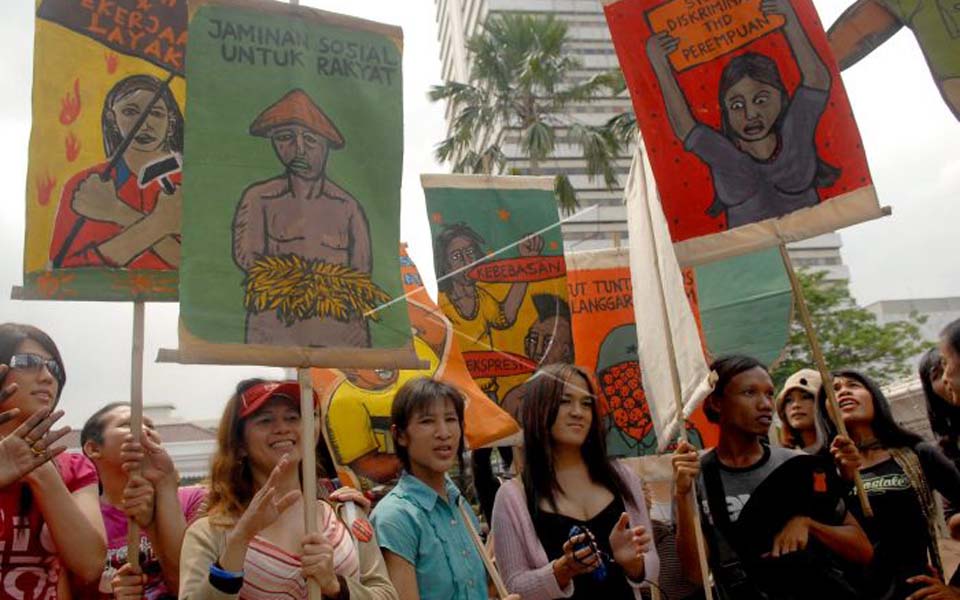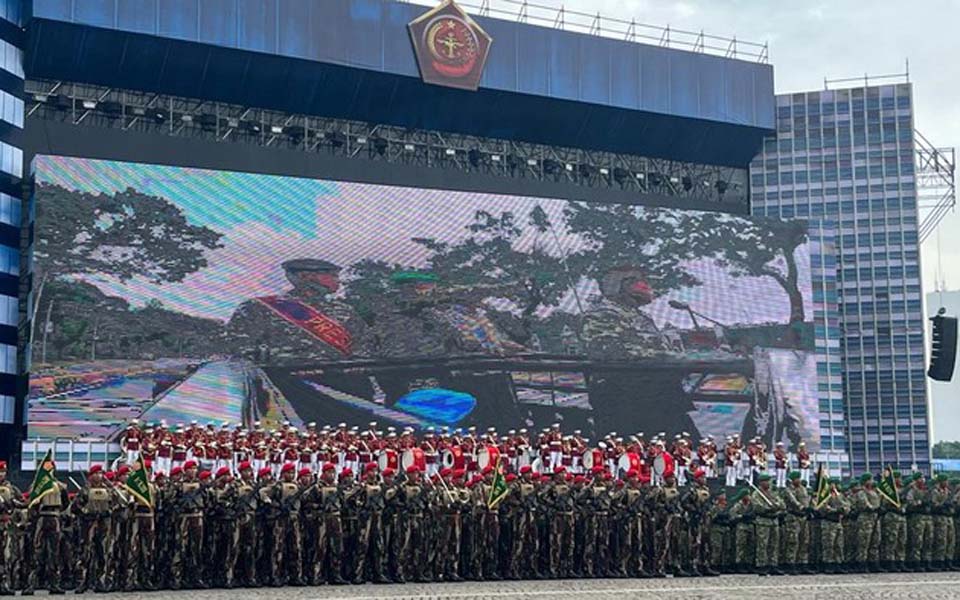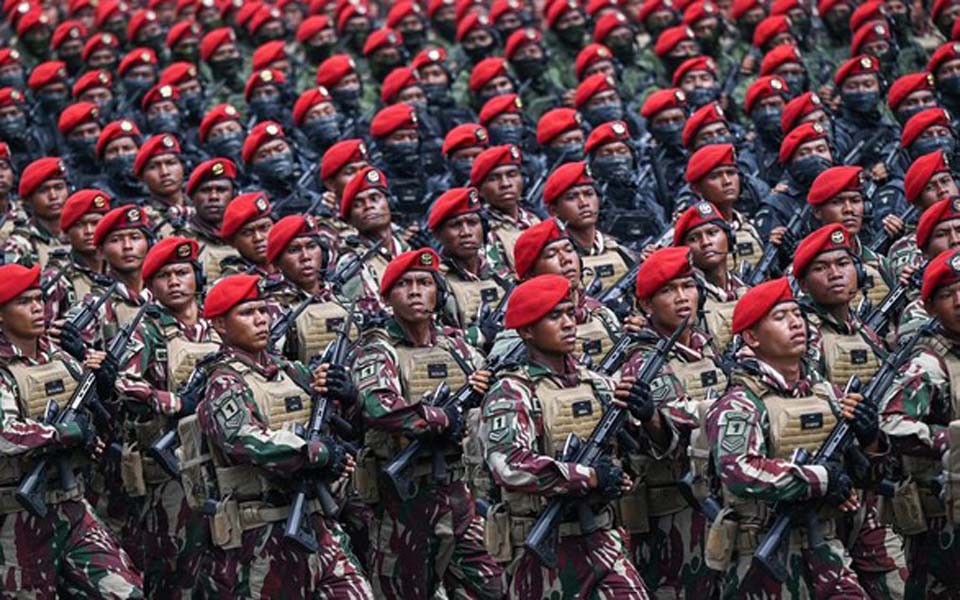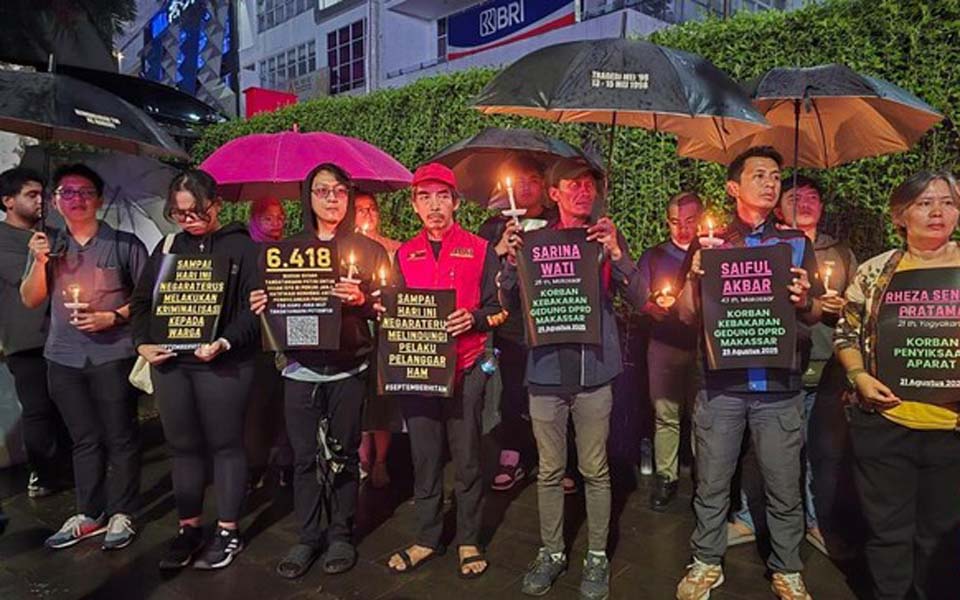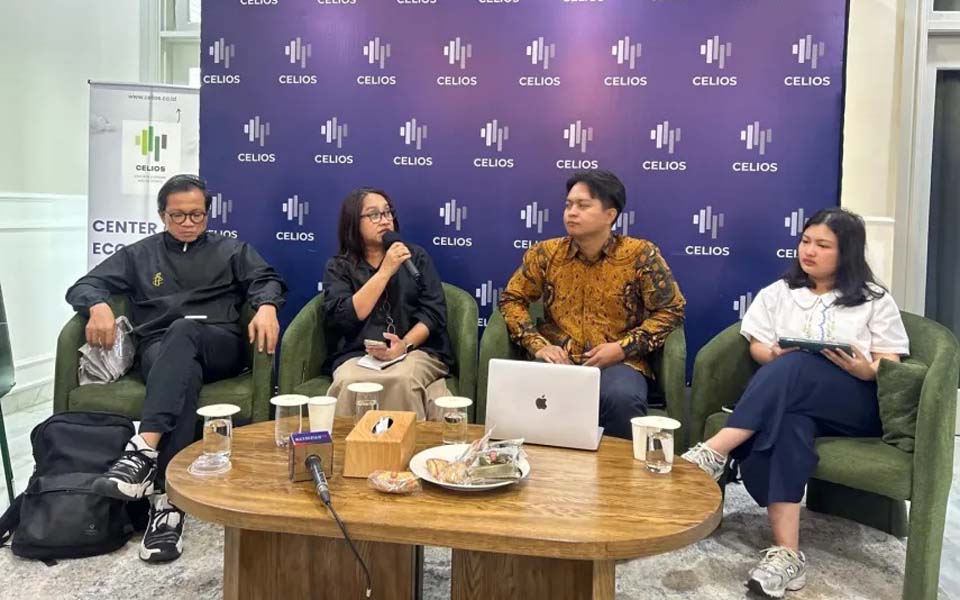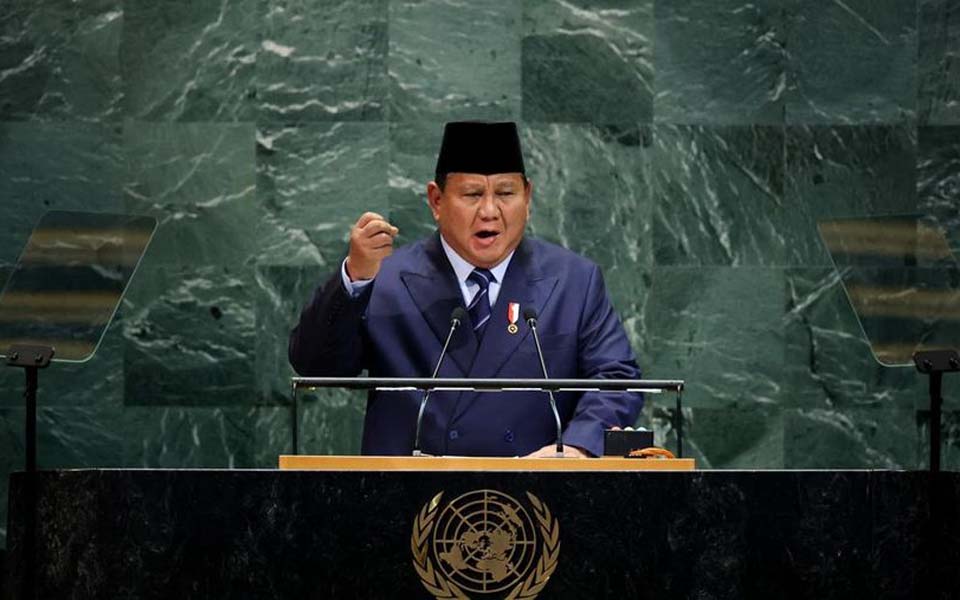Suwarjono, Jakarta – Around 1000 demonstrators held a demonstration commemorating world human rights day at the Presidential Palace on Jalan Merdeka Utara on Wednesday December 10. Although the palace was empty – President Megawati Sukarnoputri is currently visiting Japan – it did not diminish the spirit of the human rights activists.
During their action the demonstrators called for the government to resolve cases of past human rights violations and bring [the perpetrators] before a human rights court. They demanded that the humanitarian tragedy during the period of the New Order [regime of former President Suharto] and up until now be fully investigated.
The cases which they demanded be investigated included the Tanjung Priok tragedy(1), the Lampung tragedy(2), cases which occurred when Aceh was declared a military operations zone(3), the abduction of activists(4), the Trisakti and the Semanggi I and II cases(5) and human rights violations in Aceh during the military emergency(6).
The demonstrators who came from a number of different groups including the National Human Rights Commission, the Commission on Missing Persons and Victims of Violence (Kontras), the Association of Families of Missing Persons in Indonesia (Ikohi), the Trisakti Student Executive Council, the Tambang Network, the Bung Karno University, the National Student League for Democracy (LMND), National Institute of Science and Technology and the Jayabaya University, began their action at the Hotel Indonesia roundabout. They then moved off to Bank Indonesia to protest a meeting of the Consultative Groups on Indonesia (IGC), then the offices of the coordinating minister for politics and security and finally to the Presidential Palace.
During the action the demonstrators took up various issued including rejecting donor institutions such as the International Monetary Fund, the CGI, World Band, the Asia Development Bank and developed countries. This was because they consider them to be a new model of colonialism which must be opposed and that the debts owed to them have burdened the ordinary people.
As well as being joined by activists, the action was also joined by fisherpeople from a number of locations including Bogor, Karawang and Banten. The action began at around 2.45pm and was still continuing as of going to print. (gtp)
Notes:
1. Tanjung Priok – On 12 September 1984, dozens of people were killed and injured when troops fired on Muslim demonstrators in the port district of Tanjung Priok, North Jakarta.
2. Lampung: On February 7, 1989, as many as 100 people were killed when troops surrounded a village in Lampung, South Sumatra, opened fire and set fire to homes. The government claimed the villagers were members of a “deviant” Muslim sect and that troops were “defending themselves”.
3. Daerah Operasi Militer/Military Operations Zone: From 1989 to 1998, Aceh was designated a special military operations area (DOM). During this period thousands of people, mostly civilians, died as a result of clashes, torture and acts of vengeance.
4. Abduction of activists: Between 1997 and 1998 as many as fourteen pro-democracy activists were abducted by members of the elite special forces Kopassus. After extended periods of detention – in many cases the victims were severely tortured – most were released although four remain missing and are presumed dead. Former Kopassus chief Lieutenant General Prabowo Subianto who was at the time President Suharto’s son-in-law is alleged to have ordered the abductions. In April 1999, 11 low-ranking Kopassus officers were tried by a military court for the kidnappings and given sentences of between a year and 22 months in prison, although six of them were allowed to remain in the army.
5. Trisakti/Semanggi: In May 1998, security personnel shot into a crowd of student protesters from the Trisakti University near their campus in West Jakarta, killing four students and injuring several. This proved to be the spark which set-off three days of mass demonstrations and rioting in Jakarta which eventually lead to the overthrow of former President Suharto. The Semanggi I and II cases involved the fatal shooting of dozens of student demonstrators in Jakarta in November 1998 and September 1999 respectively.
6. Following the breakdown of peace negotiations between the Free Aceh Movement (GAM) and the Indonesian government, on May 19, 2003, President Megawati Sukarnoputri declared Aceh to be under a state of military emergency (marshal law) for six months. The government immediately launched what it euphemistically referred to as an “integrated” operation to restore security (read destroy GAM), law enforcement, the functioning of government and a “humanitarian” operation. In November the operation was extended by a further six months. During this period hundreds of civilians have been killed, wounded and disappeared, hundreds of schools burnt down and thousands forced to evacuate their homes.
[Translated by James Balowski.]





